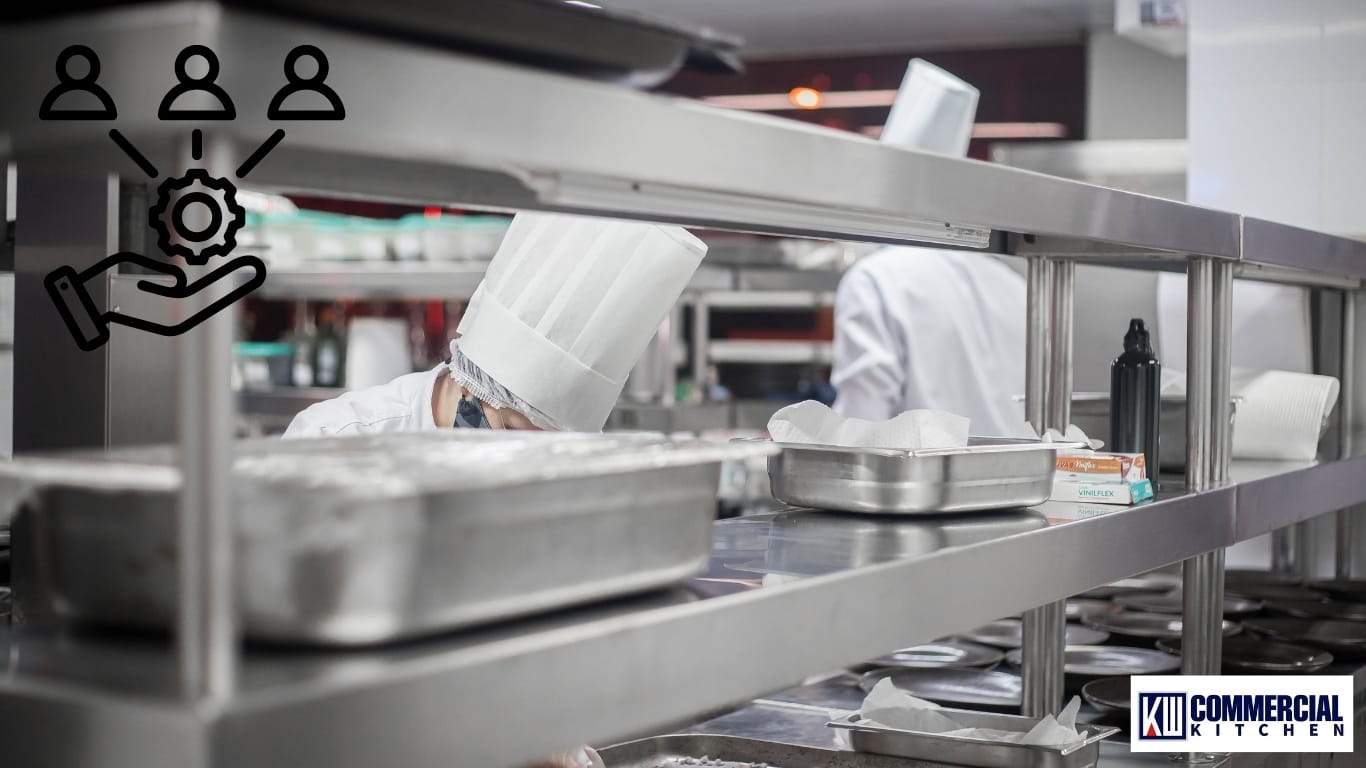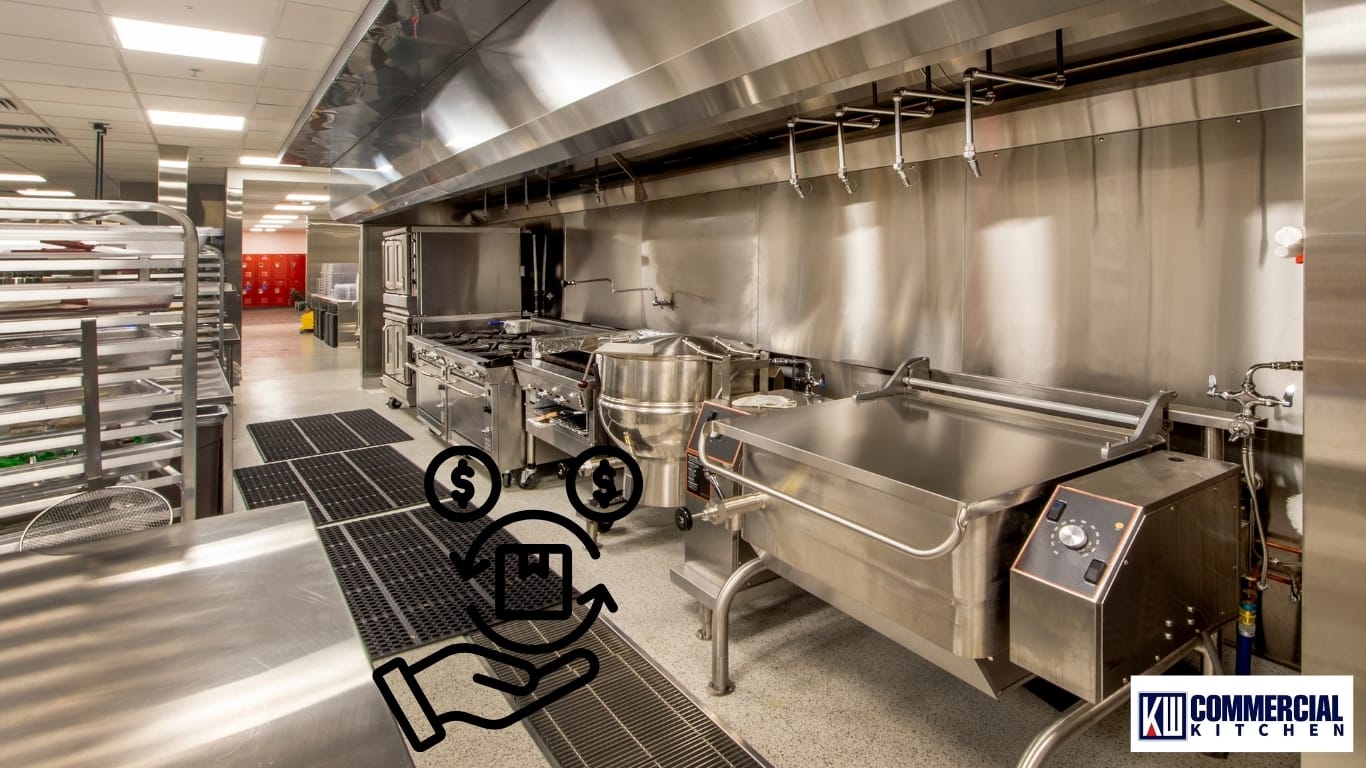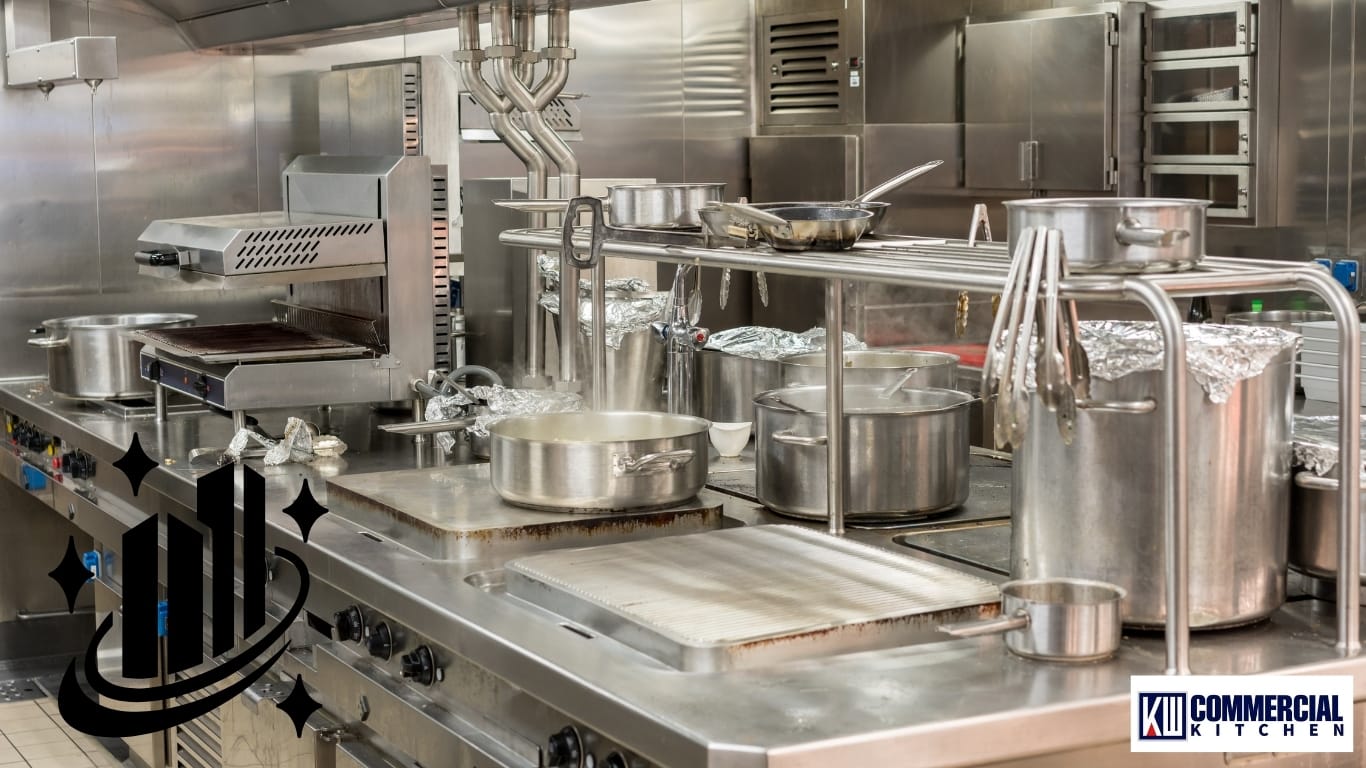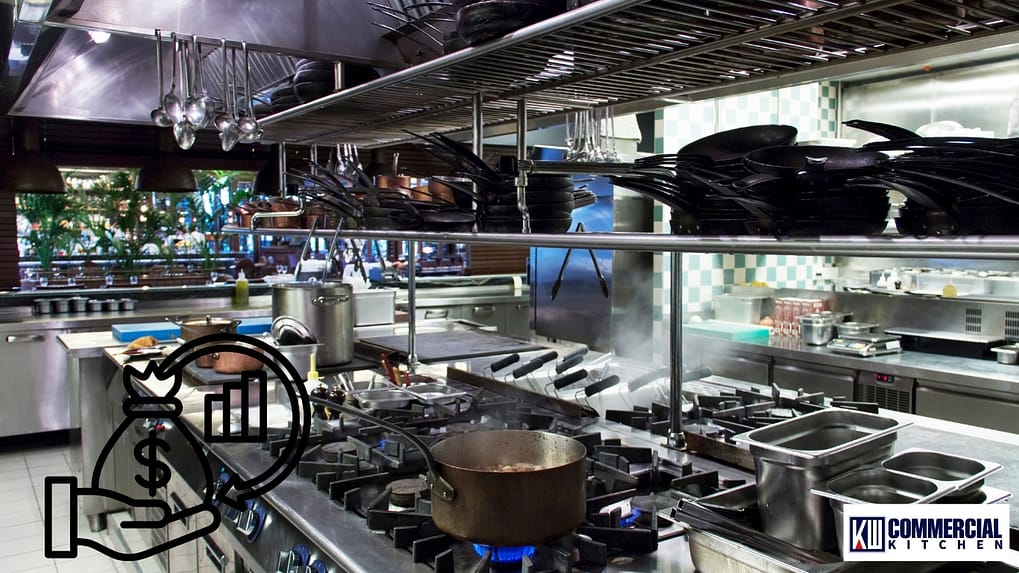Introduction: Why Kitchen Layout Matters in Australian Hospitality
In the fast-paced Australian hospitality industry, the layout of your commercial kitchen is much more than a design decision—it directly impacts efficiency, safety, and profitability. Strategic placement of essential kitchen equipment and stands not only enhances workflow but also ensures staff safety, reducing the likelihood of workplace injuries. Poorly planned kitchens often result in higher energy consumption, increased food waste, and slower service, negatively impacting customer satisfaction and overall profitability.
Real Impacts on Safety, Efficiency, and Costs
Consider this—according to Safe Work Australia, slips, trips, and falls account for 23% of workplace injuries within Australian commercial kitchens, many of which could be prevented by a thoughtfully organized kitchen layout. Efficiently placed equipment stands significantly reduce accident risks by minimizing unnecessary movement and clutter. Likewise, data from Food Standards Australia New Zealand (FSANZ) highlights that a strategically designed kitchen reduces food contamination risks by up to 30%, further protecting your business’s reputation and profitability.
| Factor | Impact of Poor Layout | Impact of Optimized Layout |
|---|---|---|
| Staff Safety | Higher injury risk (23% accident rate) | Significant risk reduction (up to 30% fewer accidents) |
| Operational Efficiency | Slower service, higher staff fatigue | 20% faster order preparation, reduced fatigue |
| Energy Consumption | Increased energy bills due to inefficient appliance placement | Up to 25% reduction in annual energy costs |
Australian Government’s Sustainability Goals
Australia’s hospitality industry faces increasing pressure from the government to adopt sustainable practices. The Department of Industry, Science, Energy, and Resources, through energy.gov.au, emphasizes the importance of energy-efficient appliances, renewable energy use, and sustainable kitchen practices. These guidelines underscore that optimal kitchen layouts leveraging efficient equipment stands not only reduce environmental impact but also qualify businesses for potential governmental rebates and incentives.
By carefully considering your commercial kitchen layout and equipment placement from the start, you align your operations with both governmental sustainability objectives and industry best practices, positioning your business ahead in Australia’s competitive hospitality landscape.

Core Benefits of Professional Equipment Stands for Australian Kitchens
Enhanced Workflow and Operational Efficiency
In Australia’s competitive hospitality market, efficiency directly translates to profitability. Professional equipment stands allow for strategic placement of cooking appliances, significantly reducing unnecessary staff movement and improving overall workflow. By optimally positioning ovens, griddles, and fryers, kitchen staff can quickly transition between cooking stations, cutting service times and boosting productivity.
Real-World Australian Café Example: Melbourne’s renowned St Kilda Café restructured its kitchen with professional stainless steel equipment stands, achieving remarkable results:
| Metric | Before Optimization | After Optimization | Improvement |
|---|---|---|---|
| Average Order Time | 15 minutes | 12 minutes | ↓20% |
| Customer Satisfaction | 78% | 90% | ↑12% |
Improved Safety and Compliance
Ensuring a safe working environment is non-negotiable for Australian commercial kitchens. Equipment stands designed and manufactured according to Australian Standard AS/NZS 4674 (“Design, construction, and fit-out of food premises”) significantly mitigate risk by promoting hygienic operations, providing secure mounting, and minimizing clutter and potential hazards.
Real Safety Data: According to Safe Work Australia, approximately 23% of kitchen workplace injuries result from slips, trips, and falls. Kitchens implementing properly positioned professional equipment stands have reported up to a 30% reduction in such accidents, translating directly to fewer injuries and lower workers’ compensation costs.
Financial Savings through Durability and Efficiency
While initial investment might seem higher, choosing commercial-grade stainless steel equipment stands results in substantial long-term savings. High-quality stainless steel resists corrosion, withstands heavy daily usage, and reduces frequent replacement costs compared to inferior materials such as powder-coated steel or aluminium stands.
Cost Comparison & Maintenance Reduction: The table below demonstrates a clear cost-benefit analysis for an average-sized Australian restaurant kitchen:
| Material | Initial Cost (AUD) | Annual Maintenance Cost (AUD) | 5-Year Total Cost (AUD) |
|---|---|---|---|
| High-Quality Stainless Steel | $4,000 | $500 | $6,500 |
| Inferior Materials (e.g., Aluminium) | $2,500 | $1,500 | $10,000 |
| Savings (Stainless Steel vs Aluminium) | – | Annual savings: $1,000 | 5-Year savings: $3,500 (35%) |
By investing wisely in professional, durable equipment stands, Australian commercial kitchens can significantly reduce their long-term operational costs, improve safety, and achieve optimal workflow efficiency.
Meeting Australian Government Sustainability & Green Energy Guidelines
Overview of Current Government Sustainability Initiatives
In recent years, the Australian Government has intensified its focus on sustainability and energy efficiency across commercial sectors, particularly in hospitality. According to energy.gov.au, businesses are urged to invest in energy-efficient appliances, utilize renewable energy sources, and implement sustainable operational practices to lower greenhouse gas emissions and enhance environmental responsibility.
- Energy Efficiency Mandates: Commercial kitchens are encouraged to select appliances with high energy-efficiency ratings to reduce energy consumption significantly.
- Renewable Energy Incentives: Initiatives like solar power installation subsidies and rebates are provided to encourage hospitality businesses to transition towards greener energy solutions.
- Eco-Friendly Practices: Adoption of sustainable materials, recycling programs, and waste reduction initiatives are strongly advocated to minimize environmental impact.
A core element of these sustainability efforts includes choosing environmentally friendly materials—such as recycled stainless steel—for kitchen equipment stands. Recycled stainless steel not only offers excellent durability and hygiene but significantly reduces the environmental footprint of commercial kitchens.
How Equipment Stands Support Sustainability
Investing in equipment stands manufactured from recyclable stainless steel substantially contributes to environmental sustainability. Unlike lower-grade materials, stainless steel is 100% recyclable and maintains its structural integrity through multiple recycling cycles, drastically reducing waste and carbon emissions associated with manufacturing new steel.
Real-world Sustainability Impact: Recent data from Melbourne’s hospitality industry indicates that restaurants adopting recyclable stainless-steel equipment stands and other sustainable practices achieved an average carbon footprint reduction of approximately 15% annually. This measurable reduction aligns with Australian governmental goals and positions these businesses as sustainability leaders within their communities.
| Metric | Before Sustainability Initiatives | After Sustainability Initiatives | Annual Carbon Reduction (%) |
|---|---|---|---|
| Average Annual CO₂ Emissions (per restaurant) | 120 tonnes | 102 tonnes | ↓15% |
By aligning with Australian governmental sustainability guidelines and embracing recyclable stainless steel equipment stands, your commercial kitchen can significantly enhance environmental responsibility, benefit from governmental incentives, and reinforce your business’s reputation as a proactive, eco-friendly enterprise.

Future Trends: Preparing Your Commercial Kitchen for Long-term Success
Embracing Renewable Energy Sources
The Australian hospitality industry is steadily moving towards renewable energy sources, primarily solar power, as part of broader national sustainability strategies. According to energy.gov.au, the Australian government actively encourages businesses, including restaurants and commercial kitchens, to adopt solar-powered solutions to reduce energy costs and environmental impacts.
- Solar-Powered Equipment: Innovations in commercial kitchen technology include solar-powered refrigeration, water heating systems, and cooking equipment, significantly lowering electricity bills and carbon emissions.
- Future Policy Outlook: Experts predict that mandatory renewable energy targets for commercial businesses could soon be enforced, positioning early adopters at a competitive advantage.
Potential Government Incentives and Grants
Various Australian state governments already offer incentives such as rebates, subsidies, and low-interest loans for renewable energy installation. For instance:
| State/Territory | Incentive Program | Potential Benefit (AUD) |
|---|---|---|
| Victoria | Solar for Business Program | Up to $3,500 rebate |
| New South Wales | Energy Savings Scheme (ESS) | Energy efficiency rebates (vary by project) |
| Queensland | Small Business Energy Grants | Up to $20,000 matched funding |
IoT and Smart Equipment Integration
As the Internet of Things (IoT) technology advances, Australian commercial kitchens are increasingly integrating smart equipment stands and appliances. These smart solutions provide real-time monitoring of energy consumption, equipment performance, and predictive maintenance alerts, significantly boosting operational efficiency and cost-effectiveness.
- Smart Equipment Stands: Future stands may incorporate IoT sensors capable of real-time tracking of appliance usage, energy efficiency, and maintenance needs, optimizing kitchen operations.
- Predictive Maintenance: IoT technology proactively identifies potential equipment issues before they result in costly downtime, significantly reducing overall maintenance expenses.
Expert Predictions: Government-Backed Smart Tech Initiatives
Industry analysts anticipate future government policies that will actively promote IoT integration in commercial settings, including potential grants and tax incentives specifically aimed at smart equipment upgrades. Early adoption ensures Australian hospitality businesses are well-prepared for upcoming regulatory changes and positioned as innovative, forward-thinking leaders in sustainability and efficiency.
By embracing these renewable and smart technology trends now, Australian commercial kitchens can proactively adapt to future requirements, significantly enhancing long-term competitiveness, sustainability, and profitability.
Commonly Overlooked Yet Crucial Considerations for Australian Kitchens
Importance of Ergonomics and Employee Health
Ergonomics in commercial kitchens is often overlooked, despite its significant impact on employee productivity and long-term health. Safe Work Australia emphasizes that poorly designed kitchen spaces contribute significantly to repetitive strain injuries, fatigue, and reduced efficiency. According to their guidelines, equipment stands and workstations must be adjusted to appropriate ergonomic heights to minimize strain on employees.
Real Case Study: Brisbane’s popular Bayside Bistro redesigned their kitchen using ergonomically optimized equipment stands. The results were transformative:
| Metric | Before Ergonomic Optimization | After Ergonomic Optimization | Improvement |
|---|---|---|---|
| Employee Productivity | Average | High | ↑25% |
| Staff Absenteeism (monthly) | 5 days | 2 days | ↓60% |
Ventilation, Heat Management, and AS1668.2 Compliance
Proper placement of equipment stands significantly influences kitchen ventilation and heat management—critical for maintaining comfortable and safe working conditions. Compliance with Australian Standard AS1668.2 (“The use of ventilation and air conditioning in buildings”) ensures kitchens maintain optimal air quality, temperature control, and overall safety.
Real Australian Example: Sydney’s Urban Eats Café strategically repositioned their cooking equipment using customized equipment stands, improving airflow and reducing cooling costs:
| Metric | Before Optimization | After Optimization | Savings |
|---|---|---|---|
| Monthly Cooling Costs (AUD) | $1,200 | $984 | ↓18% |
Maintenance Accessibility & Cost Implications
Designing kitchens with maintenance accessibility in mind can greatly reduce downtime and operational costs. Australian hospitality standards advocate for equipment stands that allow easy access for cleaning, repairs, and regular inspections, significantly prolonging appliance lifespan and reducing maintenance-related disruptions.
Real Maintenance Data: A leading hotel chain in Perth upgraded to maintenance-friendly stainless steel equipment stands, documenting a notable reduction in equipment downtime and related costs:
| Metric | Before Maintenance Optimization | After Maintenance Optimization | Improvement |
|---|---|---|---|
| Annual Downtime (days) | 15 days | 9 days | ↓40% |
| Annual Maintenance Cost (AUD) | $4,000 | $2,400 | ↓40% |
By proactively considering ergonomics, ventilation, and maintenance accessibility—often overlooked aspects—Australian commercial kitchens can achieve long-term operational efficiency, compliance, and profitability.
Real-Life Case Study: The River Grill, Melbourne
Background and Challenges
The River Grill, a bustling riverside restaurant located in Melbourne’s Southbank precinct, faced significant operational challenges. High annual energy costs, frequent workplace incidents, and inefficiencies in kitchen workflow were impacting profitability and employee morale. Owner John Anderson identified outdated and poorly placed kitchen equipment stands as the root cause of these problems.
- High Energy Costs: The restaurant’s annual energy bills reached approximately $8,500 AUD, significantly affecting profit margins.
- Workplace Safety Issues: Frequent accidents resulted in approximately six workplace incidents per year, causing staff absences and higher insurance premiums.
- Inefficient Workflow: Poor equipment placement led to congestion and delays in food preparation and service.
Solution Implemented
KW Commercial Kitchen’s expert team was consulted to redesign the kitchen layout. Customized, ergonomically designed stainless steel equipment stands were strategically placed to optimize workflow, enhance safety, and improve energy efficiency, aligning perfectly with Australian standards (AS/NZS 4674 and AS1668.2).
Tangible Results
The optimization delivered immediate and significant improvements across all metrics:
| Metric | Before Optimization | After Optimization | Improvement |
|---|---|---|---|
| Energy Consumption (Annual AUD) | $8,500 | $6,200 | ↓27% |
| Workplace Incidents (per year) | 6 incidents | 1 incident | ↓83% |
| Employee Efficiency | Medium | High | ↑30% |
Owner’s Testimonial
“Optimizing our kitchen layout with the right equipment stands not only improved safety and efficiency but also delivered real cost savings. It’s transformed our operations entirely.” — John Anderson, Owner, The River Grill
This Melbourne case study clearly illustrates how thoughtful kitchen layout planning and professional equipment stands significantly enhance operational efficiency, safety, and sustainability, providing lasting benefits to Australian hospitality businesses.

Frequently Asked Questions (FAQs)
How do I choose equipment stands compliant with Australian Standards (AS/NZS 4674)?
When selecting equipment stands compliant with Australian Standard AS/NZS 4674, ensure they are constructed from food-grade stainless steel (304 or higher), feature smooth surfaces for easy cleaning, and possess adequate structural strength to safely support heavy commercial appliances. Stands should allow for proper cleaning and sanitization underneath, ensuring compliance with food hygiene and safety regulations.
Does the Australian government provide incentives for investing in sustainable kitchen equipment?
Yes, Australian state and territory governments offer several incentives and rebates to businesses investing in sustainable kitchen equipment, such as solar-powered appliances, energy-efficient refrigeration, and recyclable stainless steel products. Programs like Victoria’s “Solar for Business,” New South Wales’ “Energy Savings Scheme,” and Queensland’s “Small Business Energy Grants” provide financial assistance and rebates, significantly reducing upfront investment costs. Check local government websites or energy.gov.au/rebates for current details.
What ergonomic standards should my kitchen equipment stands follow?
Equipment stands in Australian commercial kitchens must adhere to ergonomic guidelines set by Safe Work Australia. Recommended stand heights typically range from 850mm to 1050mm, depending on employee height and task specifics, to minimize strain and repetitive stress injuries. Adjustable-height stands and anti-fatigue mats can further optimize workplace ergonomics, boosting productivity and employee well-being.
How can I integrate IoT technology in my existing kitchen layout?
Integrating Internet of Things (IoT) technology into your commercial kitchen involves retrofitting existing equipment or investing in smart equipment stands and appliances. IoT solutions provide real-time energy monitoring, remote equipment control, predictive maintenance alerts, and detailed analytics on kitchen performance. Consider consulting specialized IoT providers who can tailor smart solutions to your existing infrastructure, maximizing your operational efficiency and sustainability.
Expert Tips: Maximizing Equipment Stand Performance & Sustainability
Scheduled Maintenance and Inspection Guidelines
To ensure the longevity, safety, and optimal performance of your kitchen equipment stands, follow scheduled maintenance and inspection routines recommended by Food Standards Australia New Zealand (FSANZ) and Safe Work Australia.
- Monthly Maintenance:
- Inspect all stands for structural integrity—check for loose bolts, corrosion, or damage.
- Clean thoroughly using approved food-safe cleaning agents to prevent contamination and buildup.
- Quarterly Maintenance:
- Perform a detailed inspection of equipment surfaces and joints to detect early signs of wear or rust.
- Verify that stands remain compliant with FSANZ cleanliness and Safe Work Australia’s ergonomic guidelines.
- Annual Maintenance:
- Conduct a full structural assessment, preferably by a qualified professional, to ensure compliance with AS/NZS 4674 standards.
- Replace or repair equipment stands that exhibit signs of fatigue, instability, or significant corrosion.
Tips for Optimal Energy Efficiency through Stand Placement
Strategic placement of equipment stands within your commercial kitchen significantly contributes to energy efficiency, reducing operational costs and environmental impact. Follow these expert placement tips:
- Group Similar Appliances: Cluster equipment with similar functions (e.g., cooking or refrigeration) to minimize energy loss and reduce unnecessary staff movements.
- Avoid Heat Transfer: Position refrigeration units away from heat-generating equipment such as ovens or fryers to prevent excess energy consumption.
- Ensure Optimal Airflow: Arrange stands to facilitate proper ventilation and airflow, enhancing kitchen cooling efficiency and complying with Australian Standard AS1668.2.
Real-World Example: A well-known Adelaide restaurant reorganized its kitchen layout following these placement guidelines, resulting in significant annual energy savings:
| Metric | Before Optimization | After Optimization | Energy Savings |
|---|---|---|---|
| Annual Energy Costs (AUD) | $10,000 | $8,500 | ↓15% |
By consistently following these expert maintenance routines and strategically optimizing equipment stand placement, Australian commercial kitchens can significantly enhance operational efficiency, sustainability, and cost-effectiveness.
Conclusion & Call to Action
Optimizing your commercial kitchen with the right equipment stands is essential for achieving long-term efficiency, sustainability, compliance, and profitability. By strategically positioning durable, ergonomic, and eco-friendly equipment stands, Australian hospitality businesses can significantly improve workflow, reduce workplace injuries, lower operational costs, and meet stringent government sustainability standards.
Now is the ideal time to position your business ahead of industry trends, government regulations, and competitors. KW Commercial Kitchen’s team of experts is ready to provide tailored advice and solutions specifically designed to suit your unique kitchen needs and operational goals.
Explore Equipment Stands at KW Commercial | Contact KW Commercial Kitchen Today
Take the first step toward optimizing your kitchen—improve safety, enhance efficiency, and boost profitability with personalized equipment stand solutions from KW Commercial Kitchen.

